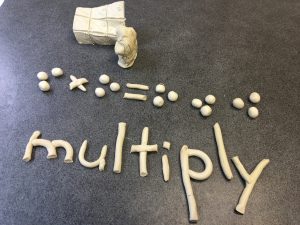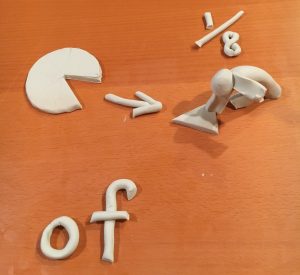Davis® Math Mastery Program
Math mastery is a program designed for those with dyscalculia or acalculia. During the program we will master the basic math functions and concepts that are foundational to learning mathematics.
Davis® Mastery for Math provides tools to correct problems learning math. These learning problems are sometimes called dyscalculia and can often accompany dyslexia and ADHD symptoms.
Visual-spatial thinkers are often confused by the words and symbols which describe math functions. When the foundation concepts for understanding all mathematics are mastered, learning math becomes easy.
Like Davis® Mastery for Dyslexia, the first step in the Math Mastery program is to enable the student to control disorientation. Once students can be sure that their perceptions are accurate, they can resolve any confusions about math with methods that build upon their creative and imaginative strengths.
The length of a program varies, depending on the needs of the individual. Usually, we will schedule 8 days, but sometime need only 6 to 7 to finish the program. Even less time may be required if the student has already completed a basic Dyslexia Correction program.
The math program was developed for children (approximately age 8 and above), teens, and adults
Davis® Mastery for Math Skills learned:
-
- to create and monitor a focused state at will
- to self-regulate energy levels to appropriately match the task at hand
- to improve balance and coordination
- to resolve confusions caused by numbers
- to understand one’s own learning style and recognize its gifts
- Increased self-esteem
- Improved ability to correctly write numerals without reversals
- Acquire meaning for basic concepts used in mathematics: Change, Consequence, Cause/Effect, Before/After, Time, Sequence, Order vs. Disorder
- Confusions resolved with understanding of math symbols and terms
- Improvement with basic math operations: addition, subtraction, carrying and borrowing, as well as multiplication, division
- Increased understanding of vocabulary used in story problems (is, are, and, of, to, etc.)
- Visual concept meaning for place value activities
- Various math-related skills: Telling time, reading or using a calendar, counting money, making change, balancing a checkbook
A peak into a typical Math Program day
-
- Review previous days work
- Check in and get into the perfect learning place using the new learned tools
- Play koosh balls while balancing
- Clay concept work (making up sentences and exploring the concepts in the real world, creative clay models of the meaning of a word, making the word in clay, mastering the meaning of the concept using our tools, visualization, and and the model that was created)
- Breaks throughout the day (typically there are 4 -6 breaks through out the day plus the one hour lunch)
- This cycle of work is continued throughout the day with other lessons interspersed such as Understanding math function words, place value, clay ball multiplication/division grid, glad games, neurodiversity characteristics and strengths.
Empowering those who think and learn differently.
All around the world, Davis is making a difference every day. With our unique insights and specialized expertise, we understand the root cause of both the perceptual gifts AND the challenges that accompany neurodivergent thinking.
The Davis Methods use proven strength-based tools and effective learning strategies that unlock clients' innate ability to learn and thrive.
Our highly trained licensed Davis facilitators deliver life-changing, personalized programs (1:1) with respect, care, and a commitment to positive outcomes for all ages.



